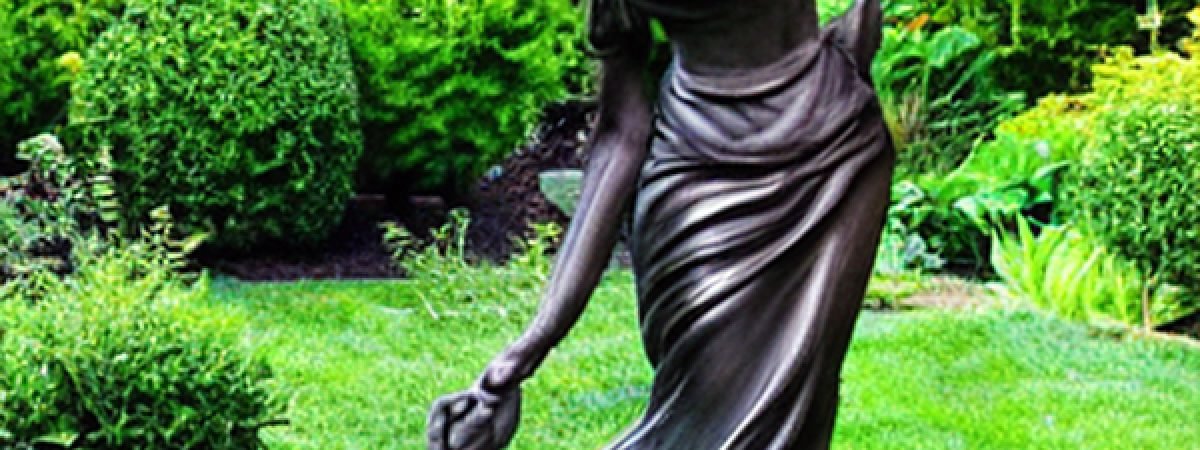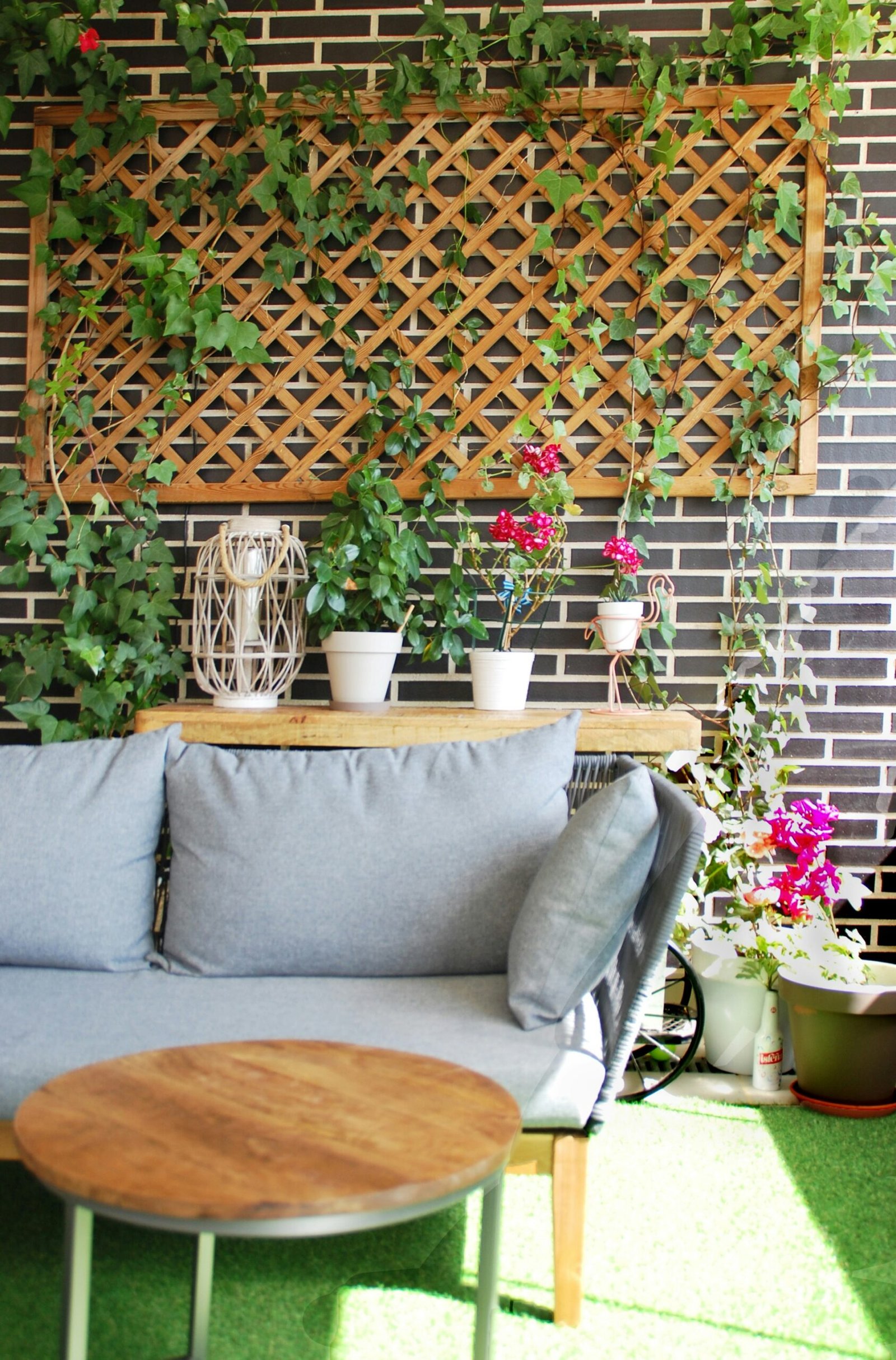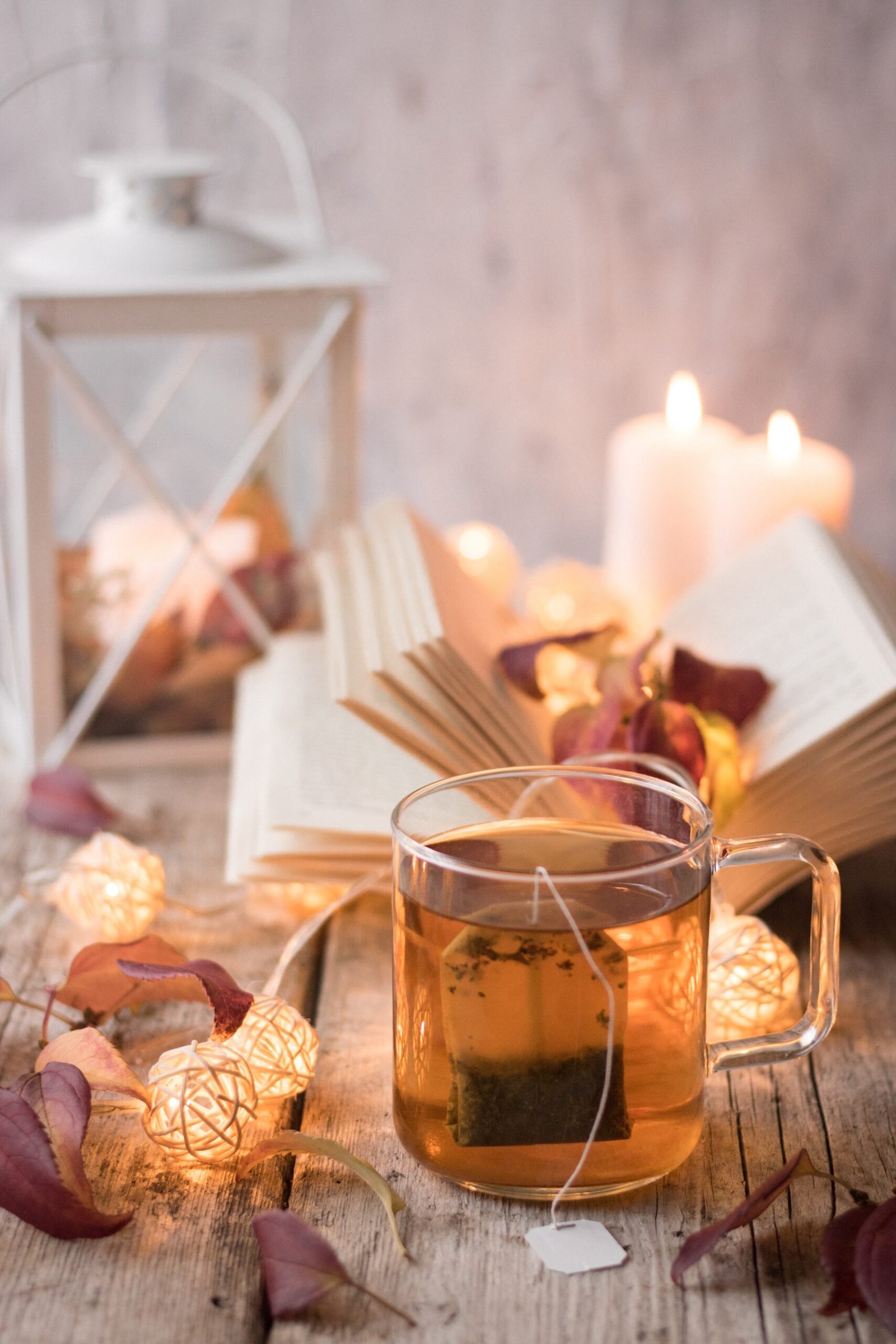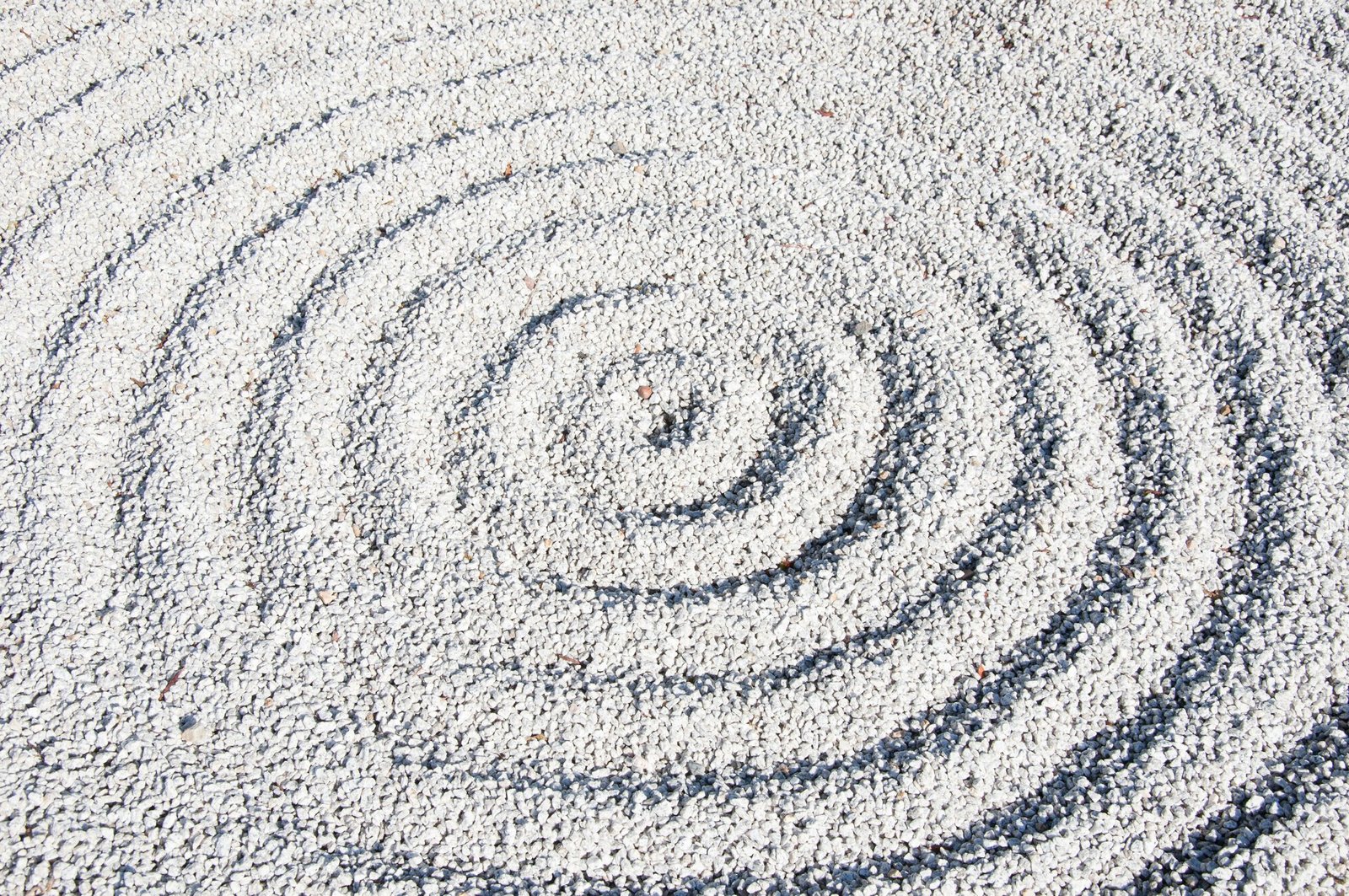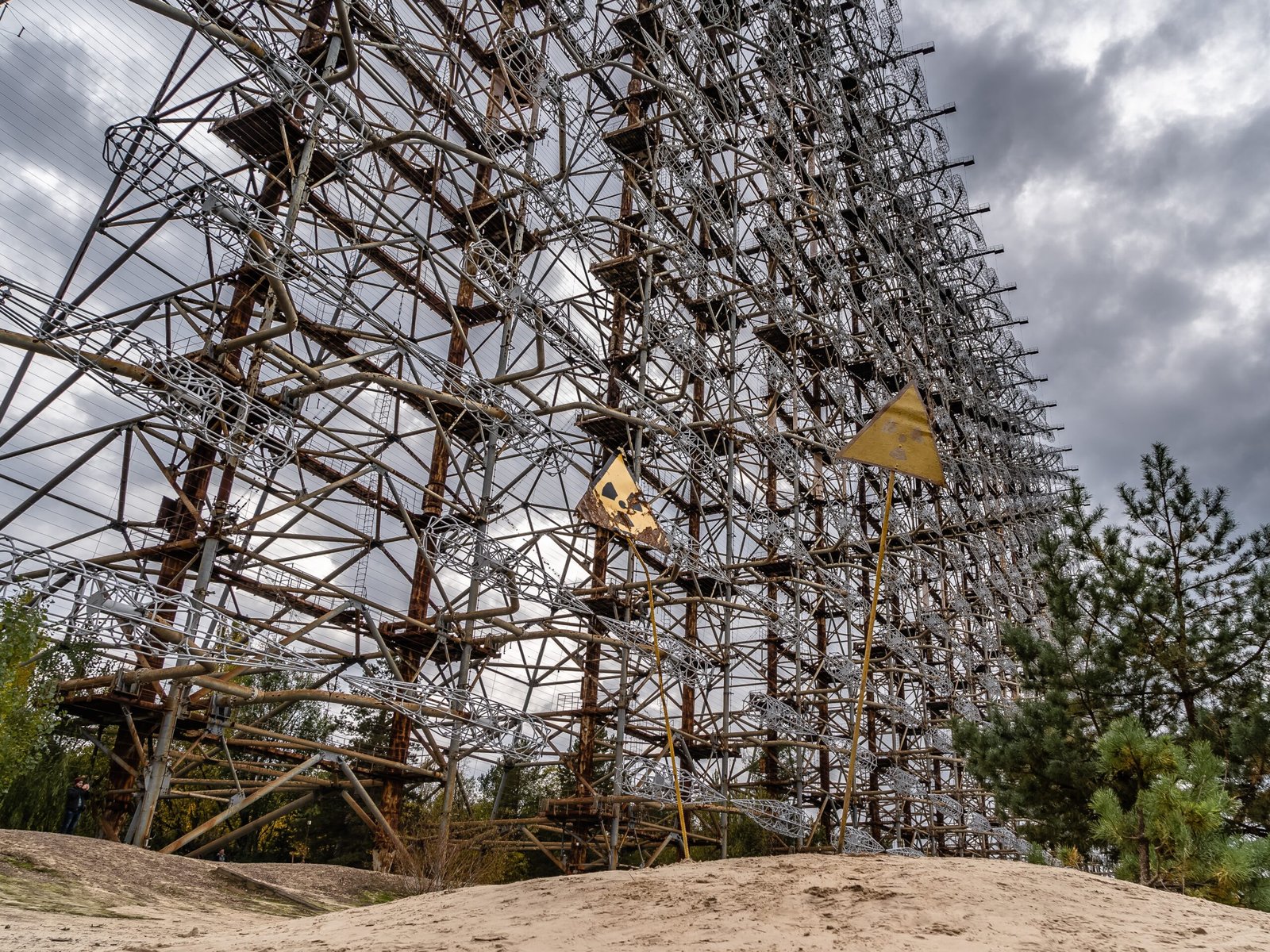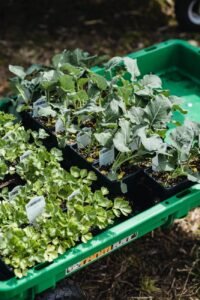Your garden is more than just a collection of plants; it’s a canvas waiting for your creativity to unfold. One way to infuse your outdoor space with personality and style is through the art of garden sculptures. These exquisite pieces, ranging from classical to contemporary, breathe life into your garden, making it an enchanting and distinctive haven. In this comprehensive guide, we’ll explore the world of garden art and sculptures, providing you with insights, ideas, and inspiration to transform your landscape into an artistic masterpiece.
Table of Contents
- Introduction
- The Artistic Garden
- The Purpose of Garden Art
- The History of Garden Sculptures
- Ancient Roots
- Renaissance Revival
- Contemporary Trends
- Selecting the Right Garden Art
- Choosing a Style
- Size Matters
- Materials and Durability
- Placing Your Garden Sculpture
- Focal Points and Vistas
- Integrating with Plants
- Lighting for Drama
- Styles of Garden Sculptures
- Classical and Greek Statuary
- Modern and Abstract Sculptures
- Whimsical and Folk Art
- DIY Garden Art
- Personalizing Your Space
- Crafting Garden Sculptures
- Upcycling and Repurposing
- Garden Sculptures for Different Spaces
- Front Yard Elegance
- Tranquil Backyard Retreats
- Small-Space Solutions
- Maintaining Your Garden Art
- Cleaning and Restoration
- Winterizing Outdoor Sculptures
- Garden Art and Its Symbolism
- Emotional Impact
- Themes and Stories
- Zen and Spiritual Gardens
- Celebrating Seasonal and Holiday Art
- Art for All Seasons
- Festive Garden Decor
- Public and Botanical Gardens
- Sculpture Gardens Worldwide
- Exploring Notable Collections
- Purchasing Garden Sculptures
- Art Galleries and Studios
- Online Marketplaces
- Local Artisans
- Famous Garden Sculptures
- The Thinker by Auguste Rodin
- David by Michelangelo
- The Four Seasons by Antonio Canova
- Large Leaping Hare by Barry Flanagan
- Conclusion
- Unleash Your Imagination
1. Introduction
The Artistic Garden
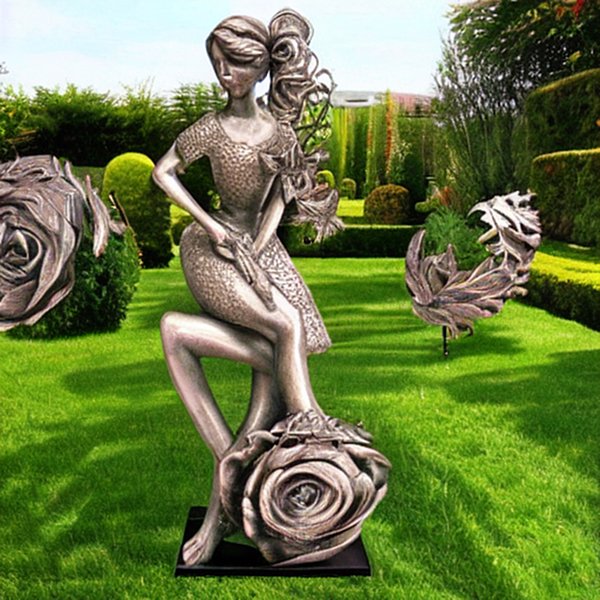
Your garden, whether it’s a small urban oasis or a sprawling countryside haven, has the potential to be a masterpiece of art and design. It’s not just about nurturing plants and maintaining a green space; it’s about creating an outdoor sanctuary that reflects your personality, passions, and aesthetics.
Garden art and sculptures play a vital role in transforming your garden from an ordinary patch of green into an extraordinary outdoor gallery. They are the finishing touches that elevate your landscape to the realm of the extraordinary. Garden sculptures can be grand or subtle, classical or contemporary, whimsical or stoic – there’s a perfect piece of art for every garden.
The Purpose of Garden Art
The presence of garden art serves several essential purposes in your landscape:
- Aesthetic Enhancement: Garden sculptures add beauty, visual interest, and character to your outdoor space. They introduce a sense of design and artistic flair that complements your plantings.
- Focal Points: Garden art provides focal points, drawing the eye and creating visual interest. They can anchor a space, define pathways, or frame a view.
- Personal Expression: Garden art allows you to express your individuality and creativity. It’s an opportunity to convey your personal style, interests, and values.
- Historical and Cultural Significance: Many garden sculptures carry historical, cultural, or symbolic meanings, enriching your garden with depth and significance.
- Therapeutic and Meditative: For many, working on or simply being around garden art can be therapeutic and meditative. It’s an artistic outlet that connects you with nature.
In the following sections, we’ll delve into the fascinating world of garden sculptures, from their historical roots to modern trends, and provide you with insights into selecting, placing, and maintaining these exquisite pieces of art.
2. The History of Garden Sculptures
Ancient Roots
Garden sculptures have a rich and diverse history that spans cultures and time periods. The tradition of incorporating art into gardens dates back thousands of years. The ancient Egyptians adorned their gardens with statues of gods and pharaohs, while the Greeks used garden sculptures as a way to celebrate their pantheon of deities.
One of the most famous examples of ancient garden sculpture is the Venus de Milo, a Hellenistic statue of Aphrodite. This graceful marble sculpture is a symbol of beauty, love, and femininity. The Venus de Milo exemplifies how garden sculptures have been used throughout history to evoke emotions and tell stories.
Renaissance Revival
During the Italian Renaissance, garden sculptures experienced a resurgence in popularity. Gardens became a place of beauty and inspiration, and sculptures played a central role in this revival. Artists like Michelangelo and Donatello created timeless masterpieces that celebrated the human form and classical ideals.
In the 17th century, the French formal garden, characterized by its symmetry and grandeur, embraced the use of garden sculptures to enhance its majestic landscapes. The Palace of Versailles is a prime example of how sculptures were employed to create a sense of order and opulence.
Contemporary Trends
Today, the tradition of garden sculptures is as vibrant as ever. Contemporary artists and sculptors continue to explore new styles, materials, and concepts. Modern gardens incorporate a wide range of sculptures, from abstract and avant-garde pieces to whimsical and playful designs.
In contemporary garden design, the emphasis is on individual expression and the fusion of various styles. Sculptures have become statements of personal taste and unique aesthetics. Garden art has evolved from classical, historical depictions to abstract forms that challenge our perceptions and spark conversations.
Throughout history, garden sculptures have been more than just decorative pieces; they’ve been symbols of culture, artistry, and human expression. They’ve told stories, conveyed emotions, and inspired creativity. Today, they continue to be a bridge between the worlds of art and nature, creating a sense of wonder and delight in our gardens.
3. Selecting the Right Garden Art
Choosing a Style
Selecting the right garden art is a personal journey that begins with your unique tastes and preferences. When choosing a style, consider the overall theme and mood you want to create in your garden. Here are some popular styles to consider:
Classic Elegance
- Greek and Roman Statuary: Timeless statues of gods, goddesses, and mythological figures.
- Neoclassical Sculptures: Elegant and refined pieces inspired by the art of ancient Greece and Rome.
Modern Chic
- Abstract Sculptures: Contemporary, non-representational forms that challenge traditional ideas of art.
- Minimalist Art: Clean lines, simple shapes, and a focus on materials.
Whimsical Delight
- Animal Sculptures: Charming depictions of wildlife, pets, and mythical creatures.
- Folk Art: Colorful, playful, and often handmade pieces that add a touch of whimsy.
Cultural Richness
- Buddhist and Zen Statues: Serene and contemplative sculptures for a tranquil garden.
- African Art: Vibrant and expressive pieces that celebrate the culture of the continent.
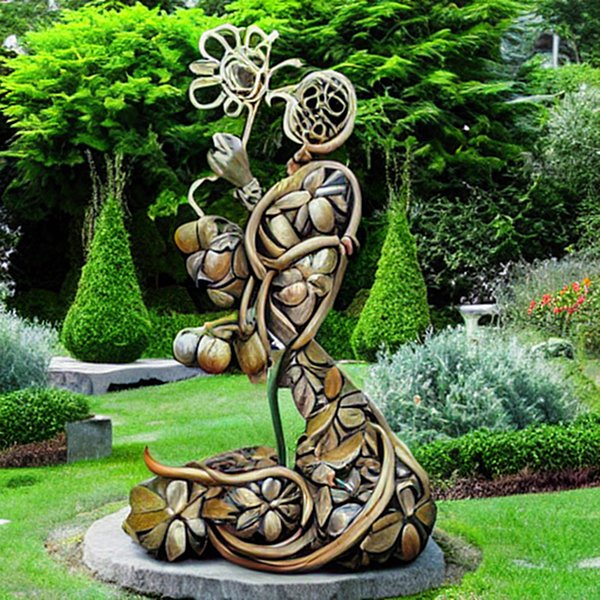
Avant-Garde
- Contemporary Installations: Bold, large-scale works that make a statement and push artistic boundaries.
- Sculpture Gardens: Curated collections of diverse sculptures in various styles.
When choosing a style, it’s essential to keep your garden’s overall design in mind. Your garden art should harmonize with the landscape, not compete with it. For example, a formal French garden may benefit from classical statues, while a more naturalistic garden might embrace abstract or contemporary sculptures.
Size Matters
The size of your garden art should be proportionate to your garden’s dimensions. An oversized sculpture in a small garden can overwhelm the space, while a tiny piece may get lost in a vast landscape. Consider the following size guidelines:
- Small Gardens: Opt for sculptures that are no taller than 36 inches. Small pieces should complement the surroundings without dominating them.
- Medium-Sized Gardens: Sculptures in the 36 to 60-inch range work well. These pieces create focal points without overshadowing the landscape.
- Large Gardens: You have more flexibility in a larger garden. Sculptures over 60 inches can make a grand statement. Consider multiple sculptures to create a cohesive collection.
Materials and Durability
The materials your garden sculptures are made from play a significant role in their aesthetics and longevity. Common materials for garden art include:
- Stone: Classic and durable, stone sculptures age gracefully and develop a weathered patina over time. Types of stone include marble, limestone, and granite.
- Bronze: Known for its rich, timeless appearance, bronze sculptures can withstand the elements and last for generations.
- Metal: Sculptures made of steel, iron, or aluminum provide a contemporary look and may develop rust or a unique patina.
- Wood: Wooden sculptures, often carved from cedar or teak, have a natural, rustic charm. They should be sealed or treated to withstand moisture.
- Ceramics: Ceramic and terracotta sculptures can be colorful and playful, but they may be susceptible to frost damage.
- Resin: Resin sculptures are lightweight, durable, and can mimic the appearance of other materials.
When selecting a material, consider your local climate. Some materials are better suited for areas with extreme weather conditions, while others require more maintenance to preserve their appearance. Additionally, think about how the material complements your chosen style and the overall aesthetic of your garden.
In the next sections, we’ll explore how to integrate these sculptures into your garden, whether they’re classical, modern, whimsical, or deeply symbolic.
4. Placing Your Garden Sculpture
Focal Points and Vistas
Placing your garden sculpture strategically is crucial to its impact. Sculptures can serve as focal points or create vistas within your garden, directing the viewer’s attention and guiding them through your landscape.
Focal Points
A focal point is a dominant feature that captures immediate attention. It’s an element that draws the viewer’s gaze and often becomes a central element of the garden’s design. Garden sculptures are ideal for creating focal points. Here are some ideas:
- Entryway Welcomes: Place a sculpture near the entrance of your garden to welcome guests and establish the garden’s tone.
- Pathway Focus: Sculptures can be positioned at the end of a garden path, drawing visitors forward as they explore the garden.
- Water Features: Garden sculptures near water features, such as fountains or ponds, enhance the calming and meditative atmosphere.
- Seating Areas: Create a visual centerpiece by positioning a sculpture in the vicinity of a seating area, offering guests a captivating view.
Vistas
Vistas are views or focal points that encourage you to look beyond the sculpture to other parts of the garden. The placement of sculptures can be used to frame beautiful views, creating a dynamic sense of depth and dimension.
- Arbors and Trellises: Position sculptures near or under garden structures like arbors or trellises, inviting visitors to view the garden through these decorative frames.
- Pathway Endings: Sculptures can also mark the end of a pathway or trail, drawing the eye toward the garden’s farthest reaches.
- Garden Rooms: In larger gardens, sculptures can serve as dividers between garden “rooms,” providing intriguing peeks into different areas of the landscape.
- Layered Views: Create layered views by placing sculptures at different depths within your garden. This technique adds depth and interest.
Integrating with Plants
Garden sculptures should complement and interact with your plantings. When merging sculptures with plants, consider the following:
- Matching Themes: Align the theme of your sculptures with the types of plants you have in your garden. For example, classical statues may suit formal gardens, while whimsical sculptures can enhance cottage-style landscapes.
- Contrast and Balance: Use garden sculptures to create visual contrast and balance. If you have a dense, lush garden, consider placing a sleek, modern sculpture to break up the greenery and provide a contrast in materials.
- Natural Accents: Allow plants to grow around and interact with sculptures. Vines can climb trellises adorned with sculptures, and flowers can provide colorful accents.
- Stepping Stones: Use stepping stones, which can double as a practical pathway, to guide visitors around sculptures, ensuring they can appreciate the art from multiple angles.
- Seasonal Changes: Keep in mind that your garden is a dynamic, ever-changing canvas. Plants will evolve with the seasons, so consider how the surroundings will shift over time.
Lighting for Drama
Lighting can transform the impact of garden sculptures, adding drama and depth. Illumination can create an entirely different experience in the evening, extending the enjoyment of your garden into the night. Consider these lighting techniques:
- Uplighting: Placing lights at the base of sculptures can cast dramatic shadows and emphasize texture.
- Silhouetting: Position lights behind sculptures to create striking silhouettes against walls or hedges.
- Downlighting: Lights installed above sculptures can illuminate them evenly and draw attention from above.
- Pathway Lighting: Use pathway lights to lead visitors through your garden, highlighting sculptures along the way.
- Colored Lights: Experiment with colored lights to create different moods and visual effects.
Strategically placed lighting can bring a whole new dimension to your garden sculptures, allowing them to shine during the evening and late-night hours.
In the following sections, we’ll explore different styles of garden sculptures, from classical and Greek statuary to modern, abstract designs, as well as whimsical and folk art pieces.
5. Styles of Garden Sculptures
Garden sculptures come in a diverse range of styles, each with its unique character and charm. Choosing a style that resonates with your garden’s theme and your personal taste is key to creating a harmonious and visually appealing outdoor space. Here are some of the most popular styles of garden sculptures:
Classical and Greek Statuary
Classical garden sculptures draw inspiration from the art of ancient Greece and Rome, a style known for its elegance, grace, and timelessness. Here are a few examples of classical sculptures that can transform your garden:
Greek Statues
- Venus de Milo: This iconic sculpture of Aphrodite represents beauty, love, and feminine grace.
- Discobolus: A famous sculpture of a discus thrower, symbolizing athleticism and excellence.
Roman Statues
- Augustus of Prima Porta: A statue of the first Roman emperor, Augustus, displaying authority and leadership.
- Nike of Samothrace: A depiction of the Greek goddess Nike, symbolizing victory and triumph.
Contemporary Modern Sculptures
Contemporary and modern sculptures bring a fresh and innovative spirit to your garden. These pieces challenge traditional forms and encourage creativity. Here are some examples:
Abstract Sculptures
- Cubist Forms: Geometric and abstract shapes that stimulate thought and interpretation.
- Kinetic Art: Moving sculptures powered by wind or other forces, creating dynamic visual effects.
Minimalist Art
- Simplicity and Elegance: Clean lines, simple forms, and an emphasis on materials and structure.
- Geometric Abstraction: Using basic geometric shapes like cubes, spheres, and cylinders to create visual intrigue.
Whimsical and Folk Art
Whimsical and folk art sculptures are lighthearted, playful, and often tell stories. They add a sense of fun and imagination to your garden. Consider these styles:
Animal Sculptures
- Garden Gnomes: These iconic figures bring a touch of fantasy to your garden.
- Animal Statues: Depictions of wildlife, pets, and mythical creatures that add a sense of enchantment.
Folk Art
- Handmade Creations: One-of-a-kind, handmade sculptures crafted from a variety of materials.
- Sculptures with Personality: Pieces that convey emotion, individuality, and cultural significance.
Cultural and Spiritual Sculptures
Cultural and spiritual garden sculptures carry meaning and significance, adding depth and resonance to your outdoor space. Consider these styles:
Buddhist and Zen Statues
- Buddha Statues: Serene and meditative depictions of Buddha.
- Zen Gardens: Minimalist gardens with rock sculptures and sand, evoking tranquility and mindfulness.
African Art
- African Sculptures: Expressive and vibrant pieces that celebrate the culture, art, and traditions of the continent.
Avant-Garde and Contemporary Installations
For the adventurous and bold gardener, avant-garde and contemporary installations push artistic boundaries and create stunning focal points:
Large-Scale Sculptures
- Statement Pieces: Bold, oversized sculptures that command attention and dominate the landscape.
- Abstract Sculptures: Non-representational works that challenge artistic conventions.
Sculpture Gardens
- Curated Collections: Gardens dedicated to showcasing a diverse range of sculptures, providing a gallery-like experience.
Each style has its own charm and impact, allowing you to choose sculptures that resonate with your garden’s theme and your personal preferences. Whether you opt for classical elegance, modern minimalism, whimsical fun, cultural depth, or avant-garde boldness, garden sculptures are sure to add a unique dimension to your outdoor space.
In the following sections, we’ll explore the world of DIY garden art, where you can unleash your creativity and personal touch by crafting your sculptures.
6. DIY Garden Art
Personalizing Your Space
Creating your garden art through do-it-yourself (DIY) projects is an excellent way to personalize your garden and infuse it with your creative touch. DIY garden art allows you to express your unique personality, showcase your crafting skills, and tailor your creations to match your garden’s aesthetic.
Crafted Stepping Stones
Design and craft stepping stones adorned with mosaic tiles, glass beads, or hand-painted designs. Personalized stepping stones can be used to create decorative pathways or provide a platform for sculptures.
Hand-Painted Planters
Transform plain clay or ceramic pots into vibrant works of art by hand-painting them. Planters with unique designs and color schemes can become standalone art pieces or serve as decorative containers for your favorite plants.
Whimsical Sculptures
Craft whimsical garden sculptures using materials like driftwood, clay, or wire. Create figures, animals, or abstract shapes that add an element of playfulness and surprise to your garden.
Crafting Garden Sculptures
Crafting your garden sculptures allows you to experiment with various materials and designs. Here are some DIY sculpture ideas to get you started:
DIY Concrete Statues
- Create your concrete mixture using cement, sand, and water.
- Use molds to shape the concrete into statues, planters, or abstract forms.
- Once the concrete sets, paint or stain the sculptures to your liking.
Wire and Metal Art
- Shape wire or metal rods into intricate designs or abstract shapes.
- Add color and character through paint or patina treatments.
- Weld metal pieces together to create larger sculptures.
Mosaic Creations
- Cover surfaces of sculptures with mosaic tiles, glass, or ceramic pieces.
- Experiment with patterns, colors, and designs to create unique mosaic art.
- Apply grout to secure the tiles and give your sculptures a finished look.
DIY garden art projects offer a sense of accomplishment and allow you to be intimately involved in shaping your garden’s aesthetics. Plus, they can be a fun and creative activity for the whole family to enjoy.
7. Garden Sculptures for Different Spaces
Front Yard Elegance
Your front yard is your home’s first impression, and garden sculptures can enhance its curb appeal. Here are some ideas for using sculptures in your front yard:
Entryway Statement
Position a striking garden sculpture at your front entrance to make a welcoming statement. A beautifully crafted sculpture near the door or driveway instantly elevates the aesthetic of your home.
Architectural Complement
Consider the architectural style of your home when selecting sculptures for the front yard. Sculptures that echo or contrast with your home’s design can create a harmonious visual balance.
Symmetrical Arrangements
For a classic and formal front yard, place identical sculptures on either side of the entryway or along the driveway. Symmetry adds a sense of order and elegance.
Tranquil Backyard Retreats
The backyard is often a more private and intimate space, and sculptures can be used to create a peaceful and serene ambiance. Here’s how you can use sculptures to transform your backyard:
Meditation Garden
Incorporate sculptures with Zen or spiritual themes into a meditation or relaxation garden. The presence of such sculptures can encourage contemplation and mindfulness.
Water Features
Place sculptures near water features like fountains or ponds. The combination of moving water and art creates a soothing and calming atmosphere.
Hide and Reveal
Consider placing sculptures at different points throughout your backyard. As visitors explore, sculptures can be revealed gradually, adding an element of surprise and discovery to the space.
Small-Space Solutions
Even if you have a compact garden or a balcony, you can still incorporate garden sculptures to add charm and character. Here are some ideas for small-space garden art:
Vertical Gardens
Utilize vertical space by attaching sculptures to walls or fences. This approach maximizes your space while creating an artistic focal point.
Miniature Statues
Choose smaller sculptures that fit well within the dimensions of your small garden or balcony. Miniature statues can still have a significant impact on a smaller scale.
Sculptural Planters
Combine garden art with functional planters. Choose sculptures that double as plant containers, allowing you to display both greenery and art in a limited space.
Incorporating sculptures into small spaces requires a thoughtful approach to scale, proportion, and placement. The right choice can make your small garden feel like a hidden gem.
In the next section, we’ll explore how to maintain your garden sculptures, ensuring they remain in pristine condition to continue enhancing your outdoor space.
8. Maintaining Your Garden Art
Garden sculptures are investments in art and aesthetics, and proper maintenance is essential to ensure their longevity and continued beauty. Regular care and upkeep help protect your sculptures from the effects of weather and time.
Cleaning and Restoration
Over time, garden sculptures can accumulate dirt, grime, and weather-related wear. Here are steps to clean and restore your sculptures:
Regular Cleaning
- Use a soft brush, cloth, or sponge to remove loose dirt and debris from the surface.
- Gently wash the sculpture with water and a mild detergent, avoiding abrasive or acidic cleaners.
Stain and Rust Removal
- For stains, use a gentle cleaning solution and a soft brush.
- Remove rust using a rust remover or a rust converter product specifically designed for outdoor sculptures.
Algae and Moss
- Algae and moss can accumulate on sculptures in damp environments. Remove them using a diluted bleach solution or a moss and algae cleaner.
Sealing and Protecting
- Consider applying a sealer or protective coating to your sculptures to guard against moisture and UV damage.
Restoration and Repair
- For significant damage or wear, consult a professional sculptor or conservator who can restore and repair your sculptures.
Winterizing Outdoor Sculptures
In regions with cold winters, it’s important to winterize your garden sculptures to protect them from the harsh elements. Here’s how to prepare your sculptures for winter:
Cleaning and Drying
- Clean your sculptures before winter sets in to prevent the buildup of dirt or stains during the cold months.
- Ensure the sculptures are completely dry to prevent freezing and moisture-related damage.
Moving Indoor
- If possible, move more delicate or valuable sculptures indoors for the winter. A garage or shed can also provide protection.
Covering and Wrapping
- Cover sculptures with waterproof, breathable fabric to protect them from snow and ice.
- Use burlap, blankets, or specially designed sculpture covers.
Elevating
- Lift smaller sculptures off the ground or place them on a platform to avoid contact with ice and snow.
Taking these steps can ensure your garden sculptures remain in excellent condition, allowing you to enjoy their beauty year after year.
In the next section, we’ll explore the symbolism and emotional impact of garden art, as well as the themes and stories that sculptures can convey.
9. Garden Art and Its Symbolism
Emotional Impact
Garden sculptures have the power to evoke a wide range of emotions and feelings, making them an integral part of your outdoor space. Here’s how sculptures can create an emotional impact:
Tranquility and Serenity
Sculptures with serene and contemplative themes, such as Buddha statues or Zen-inspired art, can bring a sense of calm and tranquility to your garden.
Joy and Playfulness
Whimsical and playful sculptures, like garden gnomes or animal figures, add a touch of lightheartedness and playfulness to your outdoor space.
Elegance and Grandeur
Classical and neoclassical statues can imbue your garden with elegance and a sense of grandeur. These sculptures often symbolize ideals like beauty, wisdom, and excellence.
Whimsy and Imagination
Sculptures with a touch of folk or folk art may inspire whimsy, imagination, and a sense of wonder. They can spark the creativity of both young and old alike.
Themes and Stories
Garden sculptures often convey themes and stories, adding depth and resonance to your outdoor space. Here are some common themes and the stories they tell:
Mythology and Legend
- Statues of gods, goddesses, and mythical creatures can transport your garden into the realms of Greek, Roman, or other world mythologies.
Love and Romance
- Sculptures depicting lovers, couples, or tender moments are symbols of love and romance.
Growth and Renewal
- Art featuring natural elements, such as trees, leaves, and flowers, can symbolize growth, renewal, and the cycles of life.
Spirituality and Zen
- Zen and spiritual garden art can represent enlightenment, inner peace, and the path to spiritual awakening.
Cultural and National Pride
- Sculptures inspired by cultural traditions and national symbols can serve as expressions of heritage and pride.
Human Experience
- Contemporary sculptures may depict the human experience, reflecting a wide range of emotions, struggles, and triumphs.
The stories your garden sculptures tell can be a reflection of your values, interests, and passions, creating a sense of connection and significance in your garden.
In the following sections, we’ll explore how to incorporate seasonal and holiday art into your garden, celebrating the changing seasons and special occasions.
10. Celebrating Seasonal and Holiday Art
Your garden is a dynamic canvas that changes with the seasons, and garden sculptures can play a vital role in celebrating these transformations. Seasonal and holiday art allows you to infuse your garden with thematic decorations and embrace the spirit of different times of the year.
Art for All Seasons
Spring: Blooming Beauties
- In spring, welcome the arrival of new life and blooms with sculptures of flowers, butterflies, and young animals.
Summer: Vibrant Colors
- As the days grow warmer, adorn your garden with sculptures representing the energy and vibrancy of summer, such as sunflowers, birds, and beach-themed art.
Autumn: Harvest and Change
- Celebrate the colors of fall with sculptures of pumpkins, leaves, and scarecrows. These sculptures symbolize the season’s harvest and change.
Winter: Holiday Magic
- During the winter holidays, create a magical atmosphere with sculptures of snowmen, reindeer, or religious figures that are meaningful to you.
Festive Garden Decor
Seasonal and holiday art can include:
- Garden Flags: Display festive flags during different seasons and holidays.
- Decorative Ornaments: Hang ornaments from trees or sculptures.
- Themed Sculptures: Invest in sculptures designed specifically for different seasons or holidays.
- Lighting and Illumination: Use holiday lights and candles to create a warm and inviting atmosphere.
Adding seasonal and holiday art keeps your garden fresh and exciting throughout the year, providing something new to look forward to with each changing season.
In the next section, we’ll explore how public and botanical gardens worldwide use sculptures to inspire and engage visitors.
11. Public and Botanical Gardens
Sculpture Gardens Worldwide
Public and botanical gardens around the world have recognized the power of garden sculptures to inspire, engage, and enrich the visitor experience. Sculpture gardens serve as open-air museums, showcasing a diverse range of sculptures in a natural and harmonious setting. Here are a few notable examples:
The Sculpture Garden at the Hirshhorn Museum and Sculpture Garden, Washington, D.C.
- The Hirshhorn’s outdoor garden features modern and contemporary sculptures by renowned artists, creating a striking contrast against the backdrop of the National Mall.
Storm King Art Center, New York
- Spanning 500 acres, Storm King is an open-air museum that showcases large-scale contemporary sculptures set amid rolling hills, fields, and woodlands.
Jardins des Tuileries, Paris, France
- This historic garden hosts a remarkable collection of sculptures, including classical and modern works. It’s a beautiful example of blending art with formal French garden design.
Hakone Open-Air Museum, Japan
- Nestled in the hills near Tokyo, Hakone features over a thousand sculptures, including works by Henry Moore, Barbara Hepworth, and other renowned artists.
Norton Simon Museum Garden, California
- The museum’s garden is home to an impressive collection of sculptures that includes pieces by Auguste Rodin, Henry Moore, and Joan Miró.
These sculpture gardens are living proof of how art can coexist with nature, enriching the visitor experience and inspiring contemplation. Exploring these gardens can offer ideas and inspiration for incorporating sculptures into your own outdoor space.
In the following sections, we’ll discuss how you can purchase garden sculptures, explore famous garden sculptures from around the world, and conclude with a call to unleash your imagination.
12. Purchasing Garden Sculptures
Garden sculptures can be acquired from various sources, each offering unique advantages. Whether you’re looking for classical statues, modern creations, or handmade folk art, here are some avenues to consider when purchasing garden sculptures:
Art Galleries and Studios
- Visit local art galleries, sculpture studios, and art exhibitions to discover unique and original pieces.
- Interact with artists and sculptors to gain insights into their creative processes and the stories behind their art.
- Commission a custom sculpture that perfectly matches your vision and garden’s theme.
Online Marketplaces
- Online marketplaces like Etsy, eBay, and Amazon feature a vast selection of garden sculptures in various styles, sizes, and materials.
- Read reviews and check ratings to ensure the quality of sculptures when purchasing online.
- Take advantage of global marketplaces to find unique pieces from artists worldwide.
Local Artisans
- Support local artists and artisans by attending craft fairs, art shows, or community events. You may find one-of-a-kind creations that resonate with you.
- Establishing a rapport with local artisans can lead to custom sculptures tailored to your garden.
Garden Centers and Nurseries
- Many garden centers and nurseries offer a selection of garden sculptures suitable for various garden styles.
- Take advantage of knowledgeable staff who can provide recommendations based on your garden’s specific needs.
Antique Shops and Auctions
- Explore antique shops and auction houses to uncover vintage or antique garden sculptures with character and history.
- Antique sculptures can add a sense of timeless elegance and heritage to your garden.
When purchasing garden sculptures, consider factors like style, material, size, and maintenance requirements. The right sculpture should harmonize with your garden’s theme, create focal points, and reflect your personal taste.
13. Famous Garden Sculptures
Garden sculptures have a rich history, and many iconic pieces are celebrated worldwide. Here are a few famous garden sculptures that have left an indelible mark on art and culture:
The Thinker by Auguste Rodin
- Originally conceived as part of a larger work titled “The Gates of Hell,” “The Thinker” has become an emblem of contemplation and intellectual reflection. The sculpture depicts a man in deep thought, pondering the complexities of the human experience.
David by Michelangelo
- “David” is a Renaissance masterpiece created by Michelangelo. It portrays the biblical hero David as he prepares to confront Goliath. The sculpture’s exquisite detail and timeless beauty have made it an enduring symbol of human potential and courage.
The Four Seasons by Antonio Canova
- Antonio Canova’s “The Four Seasons” series showcases the neoclassical style with allegorical representations of the seasons: Spring, Summer, Autumn, and Winter. These sculptures captivate the essence of each season through graceful human forms and symbolism.
Large Leaping Hare by Barry Flanagan
- This contemporary sculpture by Barry Flanagan challenges traditional artistic forms. “Large Leaping Hare” is a bronze hare in mid-jump, symbolizing energy and movement. It’s a testament to the diversity and innovation in modern garden art.
These famous sculptures illustrate the power of art to transcend time and space, captivating audiences for generations. Your choice of garden sculptures can similarly leave an indelible mark on your outdoor space, making it a place of reflection, inspiration, and beauty.
14. Unleash Your Imagination
Your garden is a canvas for creative expression. Garden art and sculptures provide an opportunity to infuse your outdoor space with your unique personality and vision. As you embark on your garden art journey, remember to:
- Embrace Diversity: Experiment with various styles, materials, and themes. Garden art is a dynamic and ever-evolving form of expression.
- Engage the Senses: Consider how your sculptures can appeal to sight, touch, and even sound. Incorporate elements like wind chimes or kinetic sculptures for an interactive experience.
- Reflect on Meaning: Choose sculptures that convey stories, themes, and emotions that resonate with you. Personal connections with your art can enrich your garden’s atmosphere.
- Celebrate Change: Your garden, like life, is constantly changing. Welcome the seasons, and adapt your sculptures to reflect the evolving beauty of nature.
- Share the Joy: Invite friends, family, and guests to enjoy your garden. Garden sculptures can serve as conversation starters and sources of inspiration.
As you add garden art and sculptures to your outdoor haven, you’re participating in an age-old tradition of blending nature with creativity. Your garden will become a sanctuary of self-expression, an evolving work of art that reflects your passions, values, and vision.
Whether your garden features classical elegance, contemporary boldness, whimsical playfulness, or spiritual depth, it’s a testament to your unique style. By infusing it with the power of garden sculptures, you’re enriching your outdoor space and creating a haven of beauty, creativity, and inspiration for years to come.
In Conclusion
Garden art and sculptures are more than just decorative elements; they are the heart and soul of your outdoor space. They tell stories, convey emotions, inspire contemplation, and reflect the beauty and diversity of the world of art. Whether you’re seeking timeless elegance, modern creativity, whimsical charm, or spiritual depth, there’s a garden sculpture waiting to become part of your landscape. Your garden is your canvas, and garden sculptures are your tools for expression. So, unleash your imagination, embrace creativity, and let your garden become a work of art that brings joy and inspiration to your life.
This concludes our exploration of “Garden Art and Sculptures: Adding Creative Flair to Your Landscape.” We hope this comprehensive guide has provided you with insights and inspiration to transform your garden into a place of beauty, expression, and personal connection through the magic of garden sculptures.

